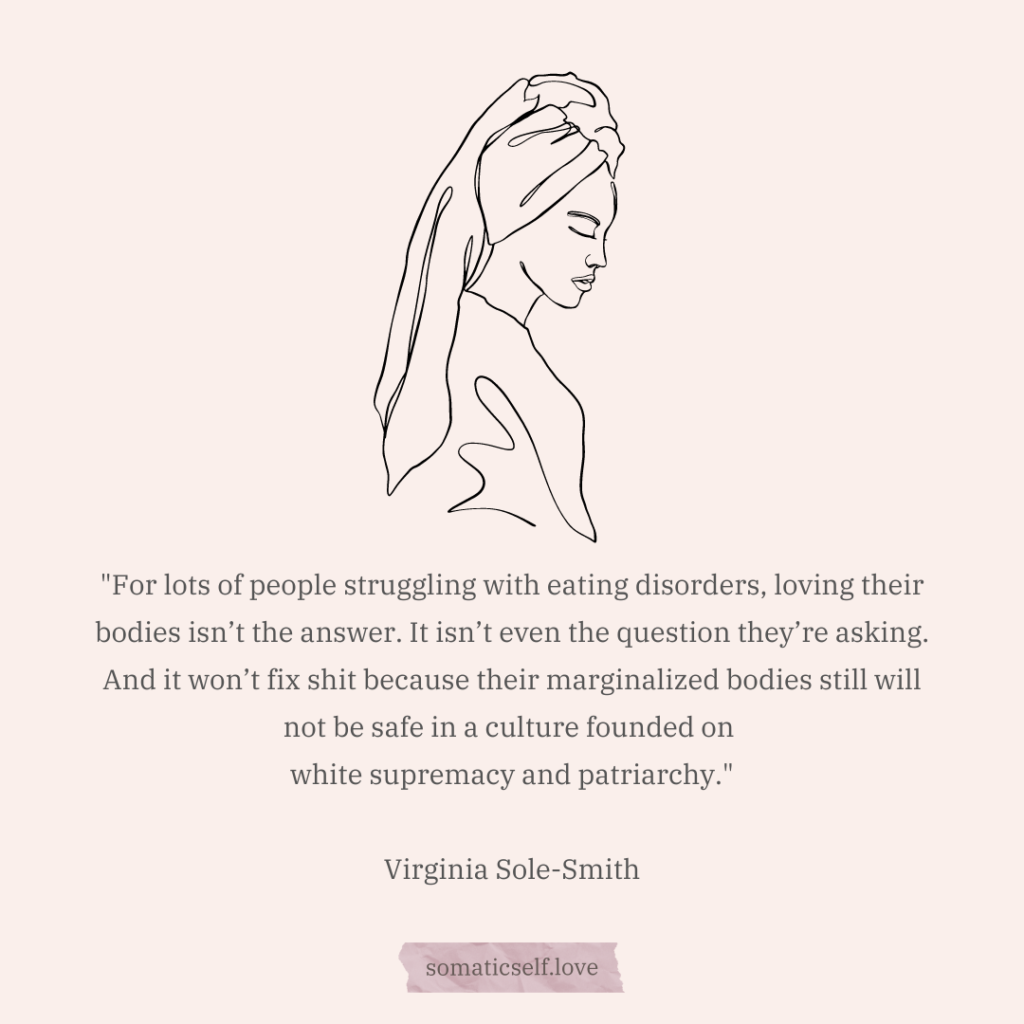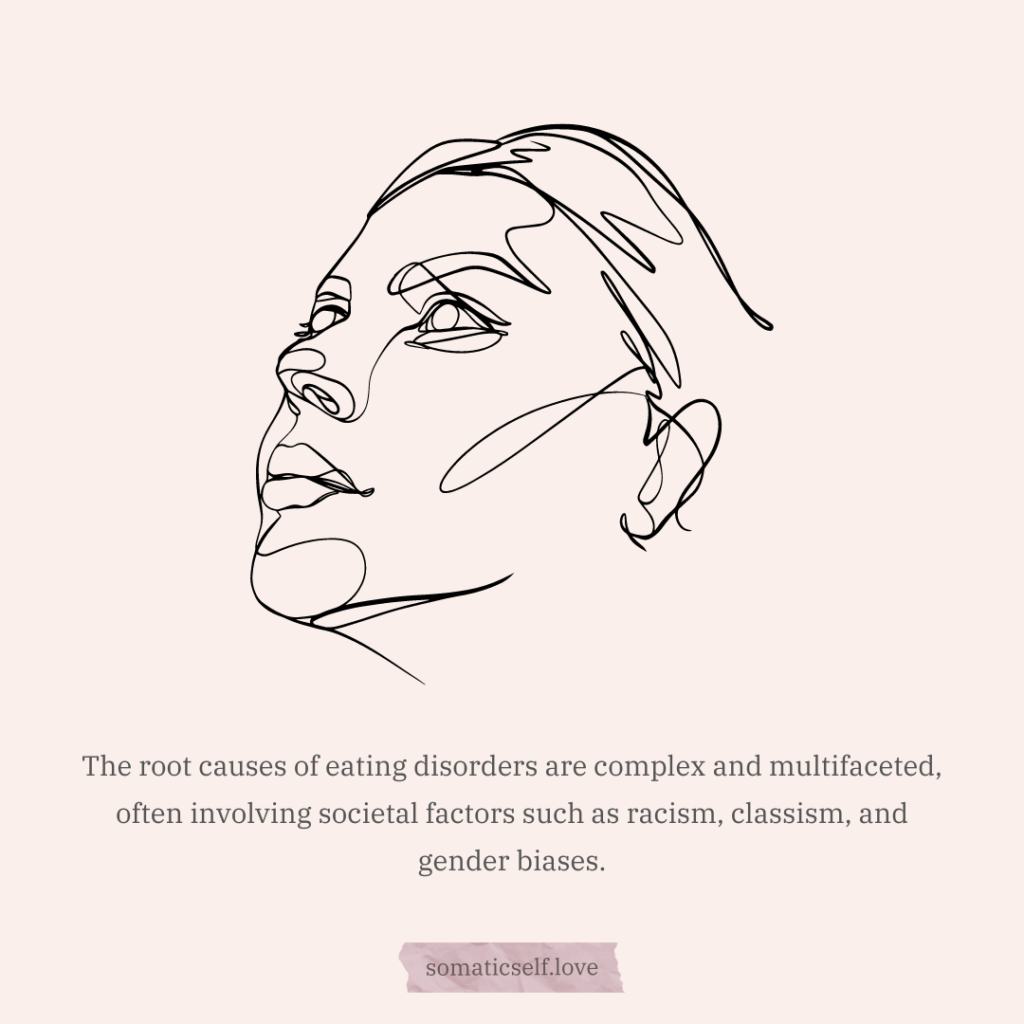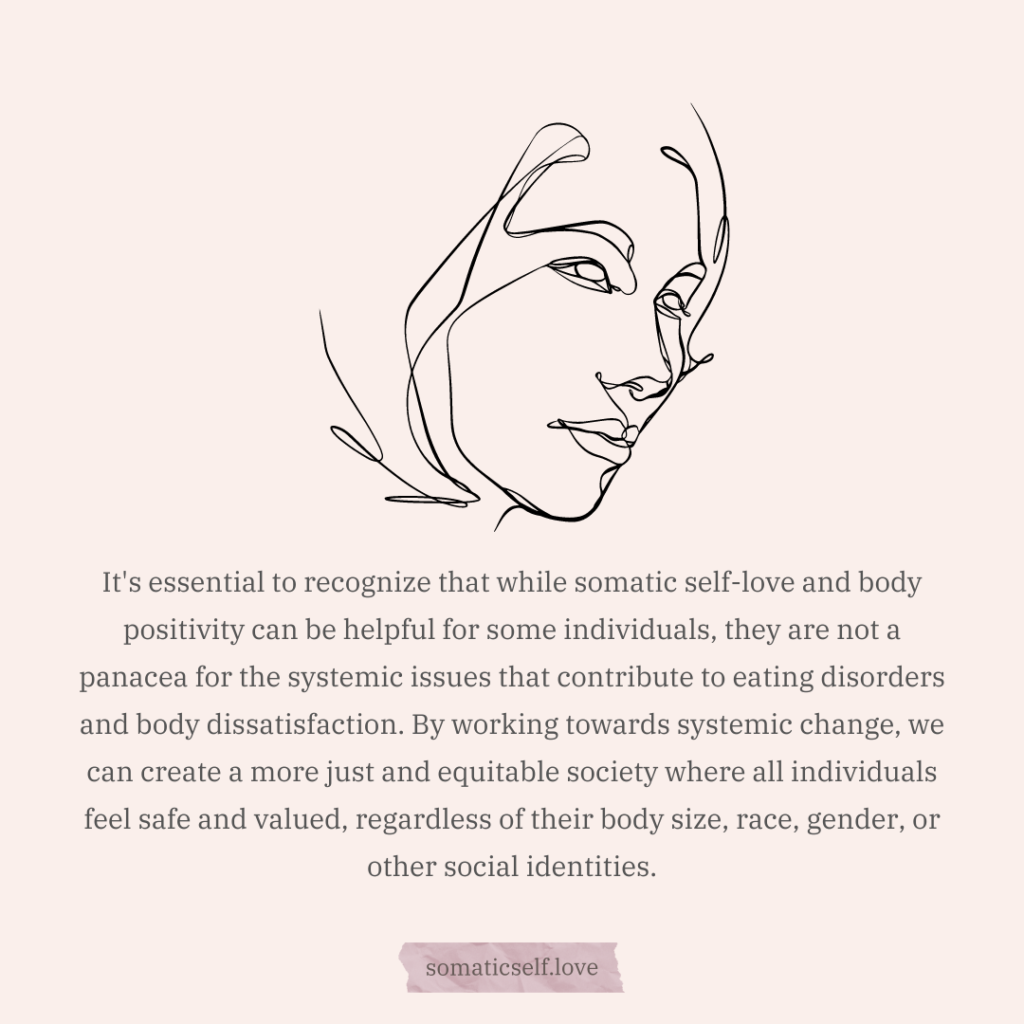Why “Just” Loving Our Bodies is Not Always the Answer


“For lots of people struggling with eating disorders, loving their bodies isn’t the answer. It isn’t even the question they’re asking. And it won’t fix shit because their marginalized bodies still will not be safe in a culture founded on white supremacy and patriarchy.
Anti-fat bias is an offshoot of anti-Black racism in particular (folks wanting to investigate that relationship further should read Fearing the Black Body by Sabrina Strings, Belly of the Beast by Da’Shaun Harrison and It’s Always Been Ours by Jessica Wilson), but it’s intricately linked with all racism, classism and gender biases…
So preaching that kids (or any of us) “just” need to love our bodies inadvertently reinforces anti-fat bias (and all of these other biases) by ignoring how often that is absolutely not going to be enough to make our kids feel safe in their bodies.
Self-love is nice; it shouldn’t be as impossible to achieve as it often feels. But we need systemic changes to the institutions that make bodies unsafe.” Virginia Sole-Smith
Somatic self-love is a concept that I believe can ultimately change the world, especially for women. And… for many people struggling with eating disorders, simply loving their bodies is not the answer.
The root causes of eating disorders are complex and multifaceted, often involving societal factors such as racism, classism, and gender biases.
Structural Inequalities
The anti-fat bias is a prime example of this concept. The anti-fat bias has a long history, dating back to ancient times when larger bodies were associated with wealth and power, but also with laziness and indulgence. In the 19th century, the medical profession began to pathologize larger bodies, and obesity was classified as a disease.
During the 20th century, the rise of the diet and weight loss industry further reinforced negative attitudes towards larger bodies. This industry promoted that being thin was associated with health, beauty, and success, while larger bodies were associated with laziness, lack of self-control, and poor health.
The anti-fat bias has also been influenced by wider societal issues such as racism, classism, and ableism. For example, the promotion of thinness has often been associated with whiteness and upper-class status.

We Need Systemic Change
In recent years, there has been a growing movement to challenge the anti-fat bias and promote body positivity and acceptance. This movement has emphasized the importance of recognizing the diversity of body sizes and shapes and promoting the idea that all bodies are valuable and deserving of respect.
Overall, the anti-fat bias has a long and complex history, and addressing it requires ongoing commitment and effort to promote understanding, acceptance, and respect for bodies of all sizes and shapes.

As described above, the anti-fat bias is an offshoot of wider systemic issues such as anti-Black racism. It is essential to recognize that simply promoting self-love and body positivity does not address the underlying structural inequalities perpetuate these biases.
To address these issues, we need systemic change that addresses the root causes of eating disorders and promotes equity and justice for all individuals.
This can involve promoting awareness and education about the systemic factors contributing to eating disorders and body dissatisfaction, advocating for policy changes that promote equity and justice for marginalized communities, and supporting initiatives promoting diversity, inclusion, and representation.
It’s essential to recognize that while self-love and body positivity can be helpful for some individuals, they are not a panacea for the systemic issues that contribute to eating disorders and body dissatisfaction. By working towards systemic change, we can create a more just and equitable society where all individuals feel safe and valued, regardless of their body size, race, gender, or other social identities.
How can we promote diversity and inclusion in our communities?
Promoting diversity and inclusion in our communities is an ongoing process that requires commitment and effort. Here are some ways to promote diversity and inclusion:
- Educate yourself: Educating yourself about issues related to diversity and inclusion is an essential first step in promoting equity and justice. This can involve reading books, attending workshops or trainings, and seeking out diverse perspectives and voices.
- Listen and learn from others: Listening to and learning from individuals from diverse backgrounds can help to promote understanding and empathy. This can involve seeking out opportunities to engage with individuals from different cultures, races, and backgrounds, and being open to learning from their experiences and perspectives.
- Speak up against discrimination: Speaking up against discrimination and prejudice is an important way to promote a culture of inclusion and equity. This can involve calling out instances of discrimination or hate speech, and advocating for policies and practices that promote diversity and inclusion.
- Support diversity in hiring and recruitment: Supporting diversity in hiring and recruitment practices can help to promote equity and inclusion in the workplace. This can involve advocating for policies that promote diversity in hiring, and actively seeking out and hiring employees from diverse backgrounds.
- Engage in community-building activities: Engaging in community-building activities that promote diversity and inclusion, such as cultural festivals or community service projects, can help to promote understanding and connection across diverse communities.
- Advocate for policy changes: Advocating for policy changes that promote equity and justice, such as anti-discrimination policies or policies that promote diversity and inclusion, is an important way to promote change and promote a more just and equitable society.
Overall, promoting diversity and inclusion in our communities requires ongoing commitment and effort. By educating ourselves, listening and learning from others, speaking up against discrimination, supporting diversity in hiring and recruitment, engaging in community-building activities, and advocating for policy changes, we can work towards creating a more just and equitable society for all individuals.
